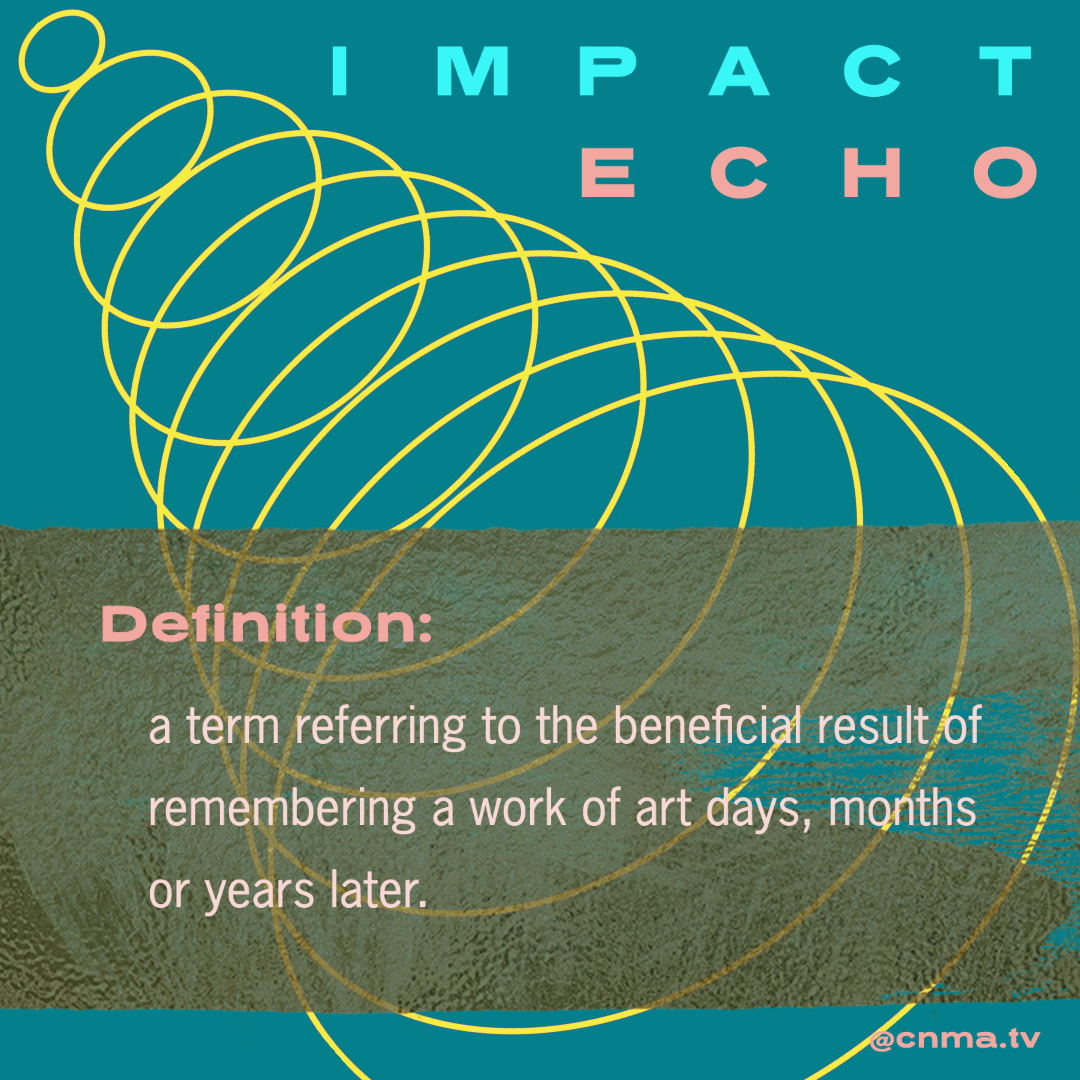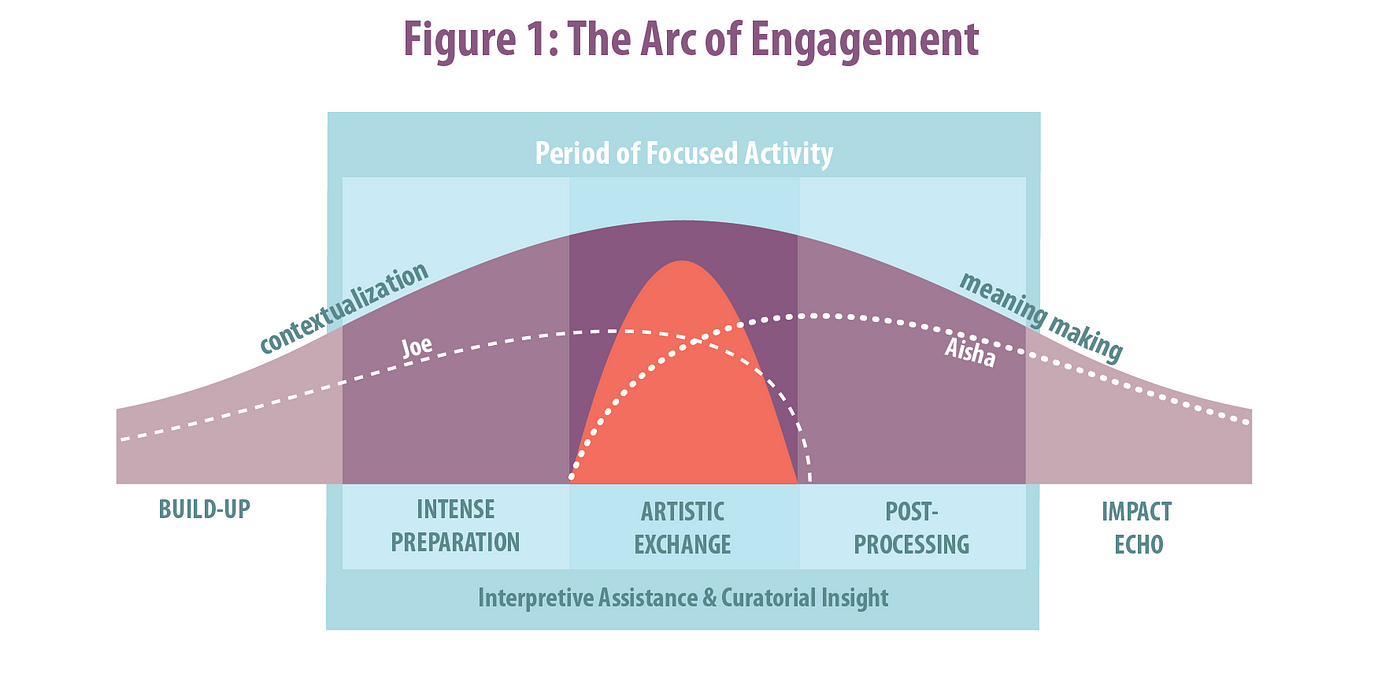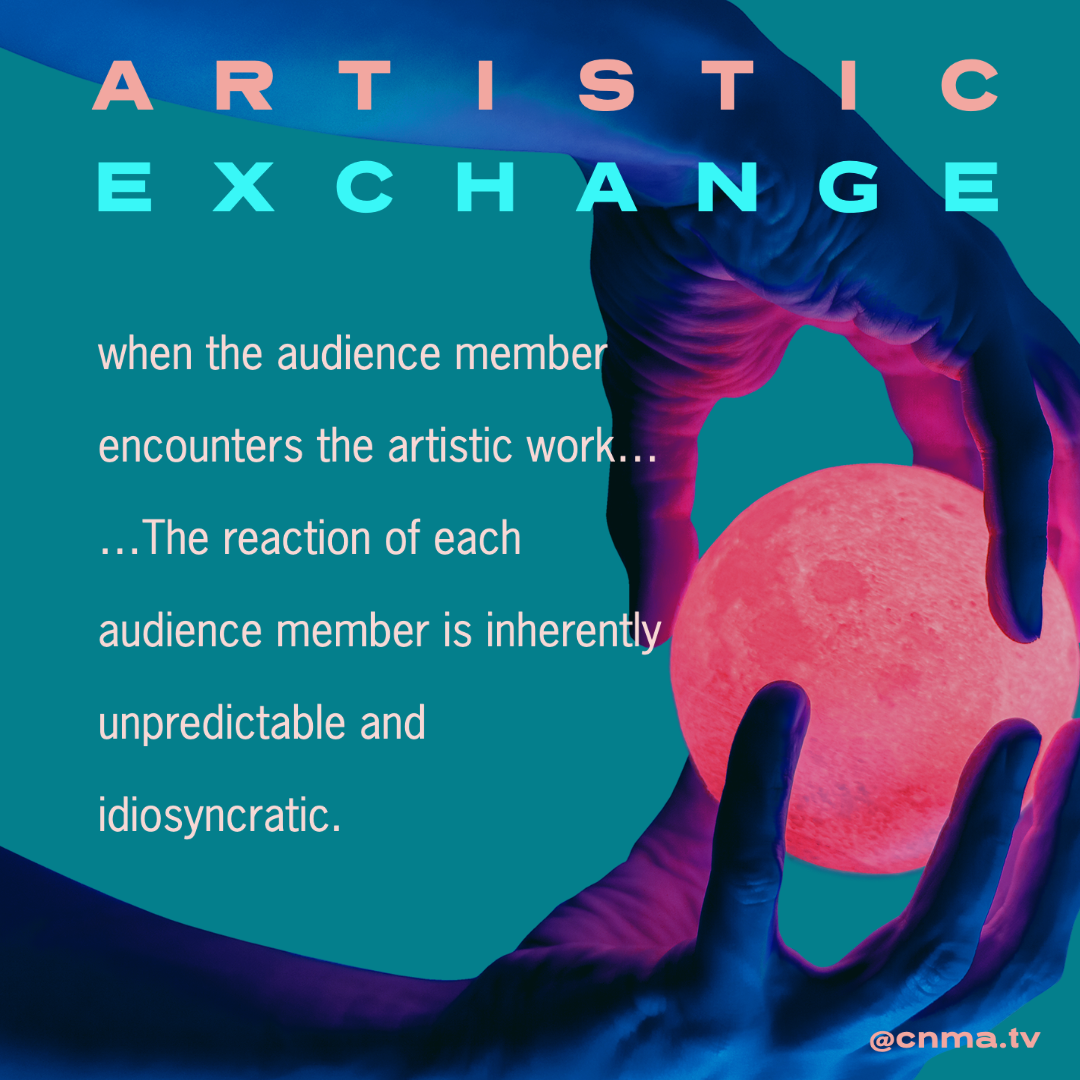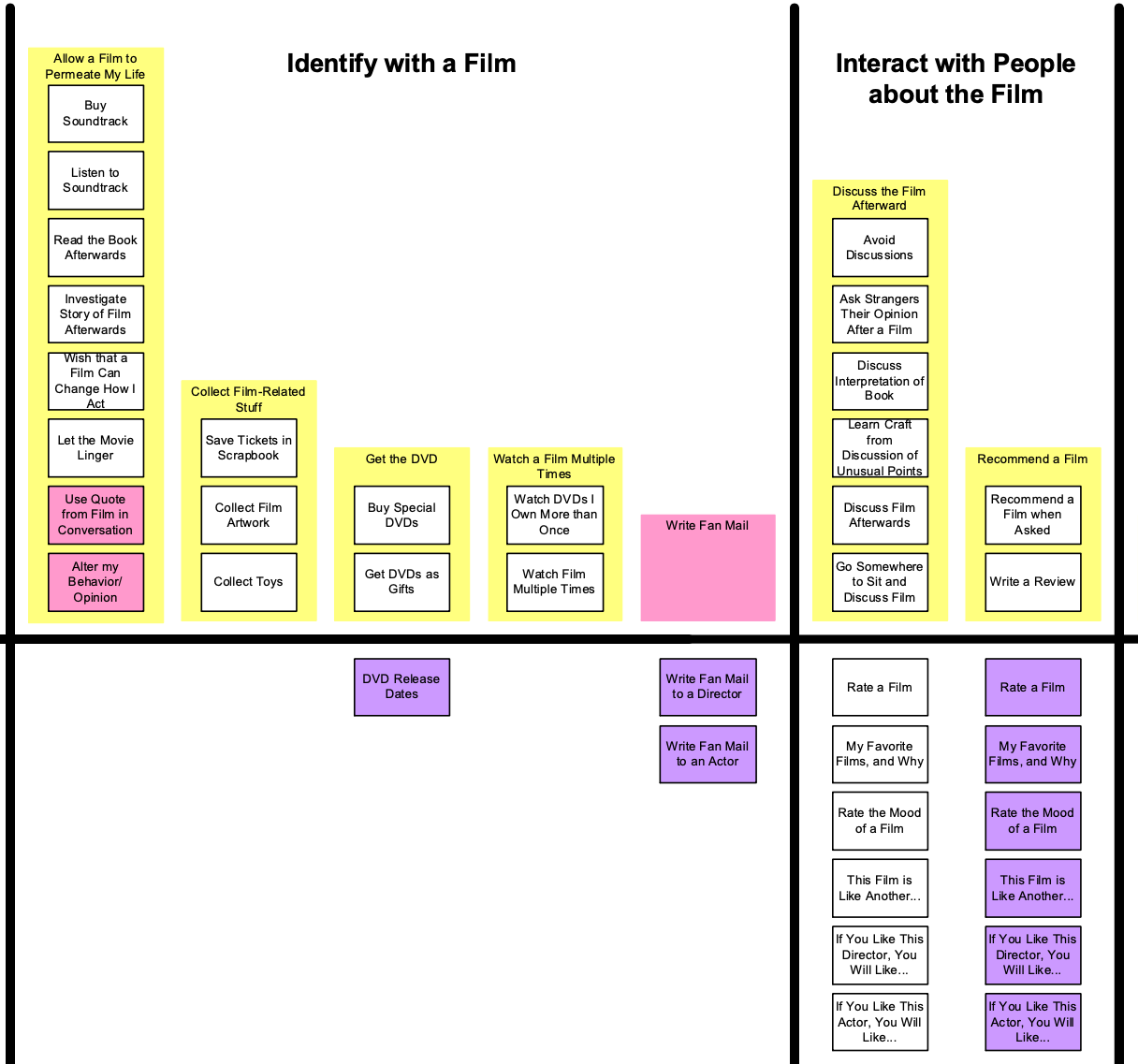Audience Engagement: The Making of Meaning
SUMMARY: “Engagement is a unifying philosophy that brings together marketing, education and artistic programming in common service of maximizing impact.” (Brown & Ratzkin, 2011, p. 2)
I make an argument for an innovative and holistic approach to audience engagement in media arts. One that calls for the creation of a new role — Experience Design Producer for Media (XD Producer), which draws on the various disciplines and toolsets found in marketing, user experience design, curation, and public relations.
Read further for a breakdown of Making Sense of Audience Engagement, a white paper commissioned by The San Francisco Foundation and authored by Alan Brown and Rebecca Ratzkin of WolfBrown.
TOPICS: Audience Engagement, User Experience, Marketing, Attention Economy
Impact over eyeballs. This article may not be for everyone, but the people I hope to reach are those that want to make an impact with the media, art, or literature they produce, not just rack up view counts. The Views, Likes, and Shares still matter because all producers of content must now understand that they are operating in an Attention Economy where the limiting resource is the target audience’s attention, and social media companies have developed Views, Likes, and Shares into a form of currency; a currency that algorithmically favors engagement that keeps the user on a platform longer. The artists and producers of content should not get fixated on the Views, Likes, and Shares as the end goal for they are only tools. The goal must remain to gain Cultural Purchase.
Early in the pandemic, as I watched the film and TV industry that I have worked in for over ten years get disrupted from production all the way through distribution, I had the time to return to a problem that has been nagging me, one that I call The Threefold Crisis of Infinite Content. In my previous article I go into more detail about it, and I went on to develop the following problem statement as part of Step 1 of 7 in the Bulletproof Problem Solving process: When the Age of Infinite Content overwhelms the Attention Economy, society experiences a breakdown in the production and consumption of art/media that maintains cultural cohesion through storytelling that creates shared experience.

As the pandemic took away our ability to gather as audiences to watch and experience art and storytelling, I went down the rabbit hole of questioning why people even gather as audiences and seek out the experiences. That rabbit hole led me to a 78-page report from 2011 titled Making Sense of Audience Engagement. In my primed state of mind, many aspects of the report jump out at me right away — in particular the concepts the authors describe as the Arc of Engagement and Impact Echo. It also helped crystalize the simple answer to the question — why do we gather in audiences to experience art? For shared meaning. And, why engage audiences? IMPACT.
Part 1: Tracing the Contours of Audience Experience
In part, the increased focus on engagement is a response to broad social trends and changes in the preferences and tastes of cultural consumers. Expectations for interactivity and interconnectivity, fueled by social media, are the “new normal.” (Brown & Ratzkin, 2011, p. 10)
In 2011, the writers of the report had to start with a section titled “Why Engage Audience?” Ten years later I doubt anyone questions the need to practice some form of engagement, but many artists and organizations still struggle to figure out what that means for them and quickly get overwhelmed spending more time on the engagement than creating the art. The biggest trap unfolds when artists try to compete with the content creators who are gaming the algorithm. The feeds devour content and requires publishing schedules that are unsustainable for artists and creators with a deeper more deliberate process, and especially narrative media that needs to be scripted, filmed, and edited. The question begs how to design audience engagement centered on the piece of art or media and not get trapped designing the media for the algorithm.
The research literature on contemporary practice in audience engagement, specifically, is more limited. One helpful source of insight stems from “experience design,” an emerging discipline. (Brown & Ratzkin, 2011, p. 13)
In the report, the authors make the leap to connect audience engagement with a discipline that has emerged now called User Experience/User Interface Design or commonly written as UX/UI Design. This field has grown out of and with computer hardware and software development, as well as web design, and seen most notably at Apple. Even the credit of coining the term “user experience” goes to Don Norman at Apple Computer in 1993, and now their celebrity Chief of Design Jony Ive seeks to create a total experience such that “products are so intuitive they vanish inside the user experience.”
The principles of experience design, when translated to the arts, suggest that audiences and visitors have a “total experience” much larger than the arts program itself. (Brown & Ratzkin, 2011, p. 13)

The key insight of crossing audience engagement with UX Design comes from that principle of “total experience.” Every artist and creator wants the products of their labor to taken and appreciated at face value with little contextualization or explanation, but the truth is that they are just ceding key aspects of the engagement between the audience and the art work — the build up and contextualization, and the post-processing — leaving it to someone else or to the audience themselves.
In film & TV, the “total experience” of the audience gets siloed across many departments — a studio responsible for marketing, a distributor responsible for theatrical or streaming experience, PR firms for press and critics for reviews. Even a strong producer or auteur director will struggle to maintain control over shaping the “total experience.” My solution is to develop a role for a person trained in a new, holistic discipline called Experience Design for Media. This person would oversee the “total experience” from pre-production all the way through the post-viewing period. To grasp what all that role would be responsible for we will need to understand the Arc of Engagement.
Part 2: The Arc of Engagement

This diagram illustrates the five stages of engagement through which audience members pass: 1) Build-up, 2) Intense Preparation, 3) The Artistic Exchange, 4) Post-Processing, and 5) Impact Echo. (Brown & Ratzkin, 2011, p. 15)
Stage 1: Build-Up and Contextualization
It might be helpful to think of the advance period as a kind of conveyor belt. People jump on the conveyor belt at different times, but they will all converge at the same time and place for a shared experience. (Brown & Ratzkin, 2011, p. 16)
In Stage 1 of the Arc, the Experience Design Producer will primarily be overseeing the marketing and PR. They will be developing the persona of the target audience for the project that will drive the rest of the process, and they will be asking how, when, and where will that audience first become aware of the piece of media. This stage encompasses the entire marketing process of AIDA (Awareness, Interest, Desire, Action), and within the build-up phase the target audience will take the action to purchase a ticket, subscribe, or just decide to sit down and focus on the piece.
A milestone in the Arc of Engagement, which may occur at any point, is what we call the moment of curatorial insight. Like a light bulb switching on, the moment of curatorial insight occurs when an audience member grasps the “why” of the artistic impulse. (Brown & Ratzkin, 2011, p. 16)
Pulling from another discipline, the Experience Design Producer must also act as a curator, and there can be great advantage for this person to understand the greater context that the work of art stands within and start planting the seeds early in the Arc. They need to be integrated with the auteur early to understand the artistic impulse and strategize how that will be revealed (or intentionally withheld). By studying curation the XD Producer understands how to lead an audience to that “light bulb switching on” moment without overshadowing the project itself. The art of curation itself is as much about knowing what to leave out as it is what you present.
Stage 2: Intense Preparation
The larger point of the whole build-up and contextualization period is to build anticipation and increase the likelihood that the artistic program will deliver high intrinsic impacts to the audience. (Brown & Ratzkin, 2011, p. 17)
In Stage 2, the audience has made the decision to engage, and now the XD Producer must give them the tools to prepare. As we go deeper, we will discuss audience typologies and how certain people desire and seek different levels of preparation. In this stage the hand of the XD Producer should be invisible. By understanding the wants and needs of the audience typologies, the producer strategically ensures that a tool or channel exists for each of them to engage with, thereby allowing each audience typology to have the fullest experience.
Without the strategic planning provided by the XD Producer, certain segments of the target audience may not be getting served, in which case their interest may wane and keep them from having a deeper level of engagement that results in a greater impact echo. To restate the first line of this article — Impact over eyeballs. The goal of this whole process is not to design for a mass audience. The strategy is to be laser focused on the target audience and ensure that you serve those True Fans.
When you only use marketing to engage, the interaction ends with the audience conversion around the call-to-action of buying tickets, clicking through, etc. With audience engagement, you set the stage for a deeper impact on the audience during the artistic exchange.
Stage 3: The Artistic Exchange

Gone are the days when an audience would only experience a film in a theater, or even just watch it on TV. The internet and streaming has broken the whole experience open into a spectrum and increasingly complex ecosystem. Understanding and navigating this system may be the most crucial aspect that every independent producer and director is trying to figure out right now, and I believe it may be the stage of the biggest missed opportunity for designing the experience.
Because many independent creators hope for the best with selling the project to a distributor, they put off or hope that the distributor will handle the experience of the artistic exchange. At a minimum now that so many channels for distribution exist, creators should be clear-eyed about their target audience and evaluating which distributors serve the best experience for that audience. I would argue that this presents the best opportunity for the creators to work with an XD Producer to have a bespoke, responsive web and social media presence that caters to the target audience no matter what platform the media gets delivered through.
By designing to be platform agnostic, the creators can have an engagement strategy that integrates through an entire distribution cycle for example — it starts with film festival screenings, adjusts when sold to a distributor to engage the audience before and after a wide theatrical screening, then when it goes to a streaming platform (or multiple), the design helps the audience find the piece online.
The importance of not giving up control of the engagement through the artistic exchange is so that the experience can continue to be developed in Stages 4 and 5.
Stage 4: Post-Processing and Meaning Making
Following the conclusion of the artistic exchange, the audience member enters a period of intense “post-processing” — a time for making sense of what happened and forming a critical reaction. This is another “hot spot” for engagement, while the experience is fresh. (Brown & Ratzkin, 2011, p. 19)
The post-processing stage presents another opportunity that frequently seems to be overlooked or actively avoided. Many artists may want to just have the audience develop their own relationship with a piece, but I believe value stills exists in understanding and mapping this phase of the engagement. In this stage we can utilize other tools from the UX Design field — Audience Journey Mapping and Mental Models. Whether the desire or need exists to overtly engage the audience, it is important to understand their journey coming out of the artistic exchange.
(In theatrical film, I would argue that the end credit sequence itself, and the director or producer’s choices of music and visuals become the first element of the post-processing engagement)
A key aspect of developing an Audience Journey Map is that it allows the team to know where and when the audience goes for further engagement so that you are ready to meet them there with content designed to deepen the experience.

Excerpt from a Movie-Goer Alignment Diagram developed by Indi Young in 2004
Similarly using a Mental Model helps understand the behavior of the target audience as it relates to the media. Here I have pulled out the post-processing stages of a Movie-Goer Alignment Diagram developed by Indi Young in 2004 as an example of a mental model. She conducted extensive interviews and workshops to identify the thoughts and behaviors of a movie-going audience.
The process of meaning making may be deeply personal or very public, and may be facilitated actively, or may occur subconsciously without any outside mediation. (Brown & Ratzkin, 2011, p. 19)
Stage 5: The Impact Echo
Following the intense period of post-processing, the final stage of the arc plays out. It is a phenomenon we call the “impact echo,” during which the event may be totally forgotten or remembered and recalled from time to time. As we all know, some arts experiences remain vividly in our minds for decades, while others fade into distant memory as soon as we walk out the door. The impact echo can last for a few days, a few weeks, or a lifetime. (Brown & Ratzkin, 2011, p. 20)
There is nothing wrong with entertainment made for escapism. People will always want to watch movies and TV to be transported, release tension, or cure boredom. For those pieces of media and audiences a strategically developed engagement cycle does not need to be implemented. However, for art and media that seeks to gain Cultural Purchase, to enter the blood stream of society and culture, achieving the impact echo should be the goal.
As the authors of the report note, “Little has been learned about the long-term impact of individual arts experiences.” This presents an opportunity to develop a new way of looking at and measuring success in media. The default measurement in media for decades has been number of viewers. If there were many viewers, the media must be of a certain quality and it entered the public consciousness. It would influence the next generation of storytellers, and later generations would look back on it.
In the current media landscape though, over a million viewers in the U.S. can watch a TV show, and it will still have it feel like no one is talking about it or no one else you know has seen it. On the other hand, another show may come along with a buzz that feels like everyone is talking about it. So what is the difference in those fanbases?
Read the second installment, No Audience Left Behind, covering Parts 3 and 4…
Part 3: Audience Typologies
“There are people in it to be social, people who are there for art, for personal growth, and some want engagement on all levels.” -Marcia Lazer, Director of Marketing, San Francisco Opera
Part 4: Towards better practice
“The key to any successful relationship is that you continue to do it. Think about relationships with audiences as you would want to have a relationship with anyone. You want to feel known. You want to feel trusted. You want to feel respected. You want to feel robust curiosity all the time.” -Rob Bailis, Theater Director, Oberlin Dance Collective
Sources:
Brown, A. S., & Ratzkin, R. (2011, Summer). Making Sense of Audience Engagement. The San Francisco Foundation.
Kelly, Kevin. “1,000 True Fans.” The Technium, kk.org/thetechnium/1000-true-fans. Accessed 5 Apr. 2021.
Young, Indi. “Example: The Moviegoer Mental Model Diagram.” Indiyoung.Com, 12 Aug. 2005, indiyoung.com/example-the-moviegoer-mental-model-diagram.


